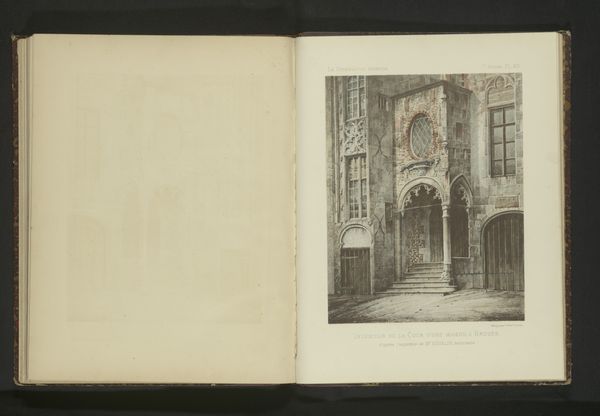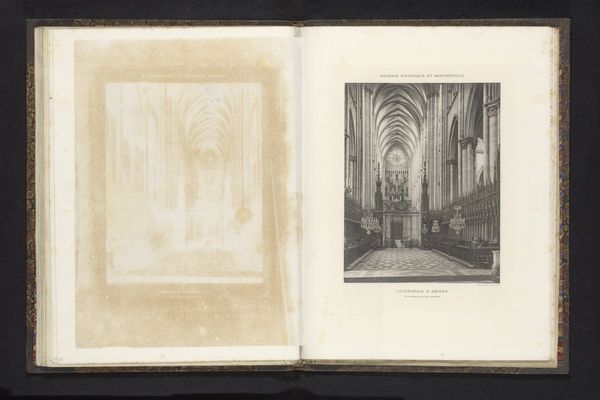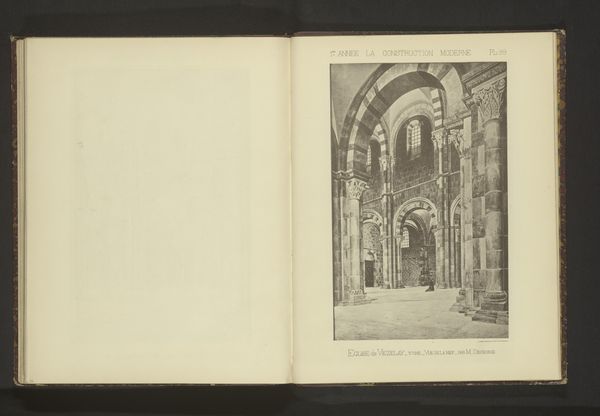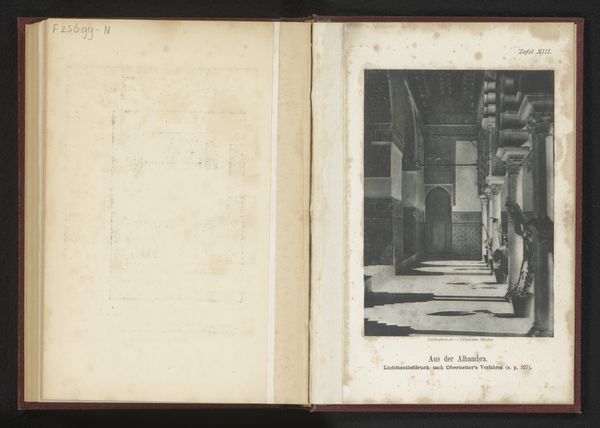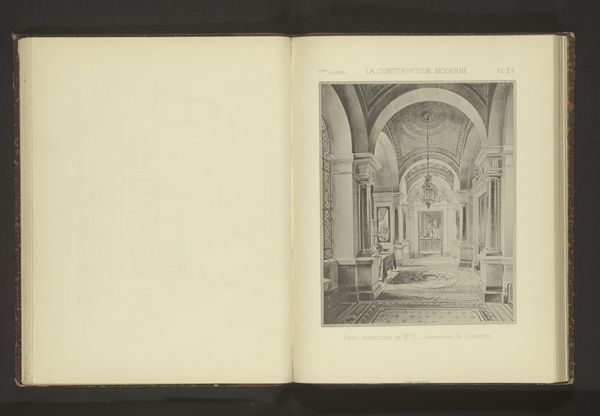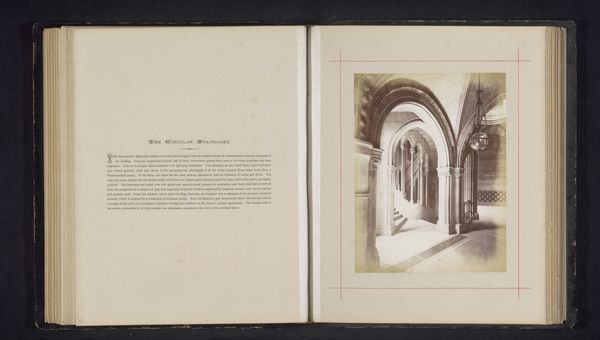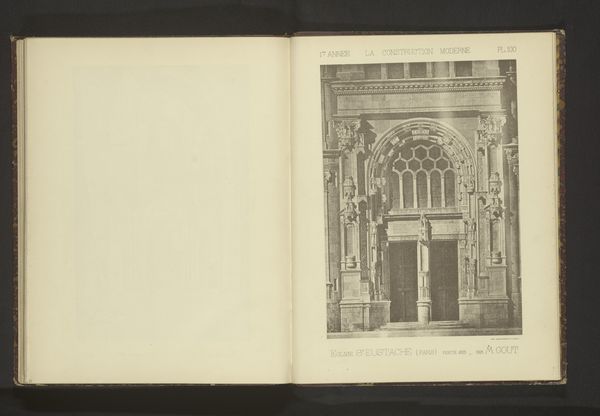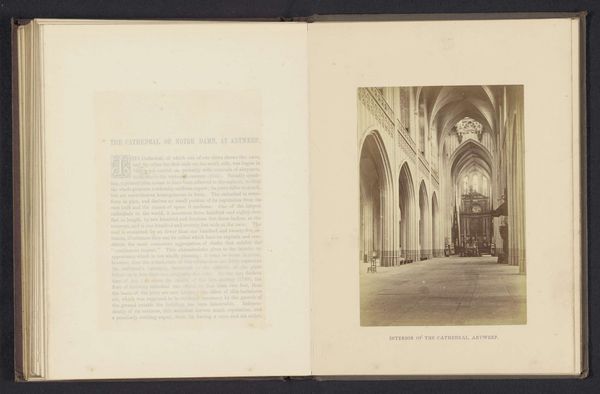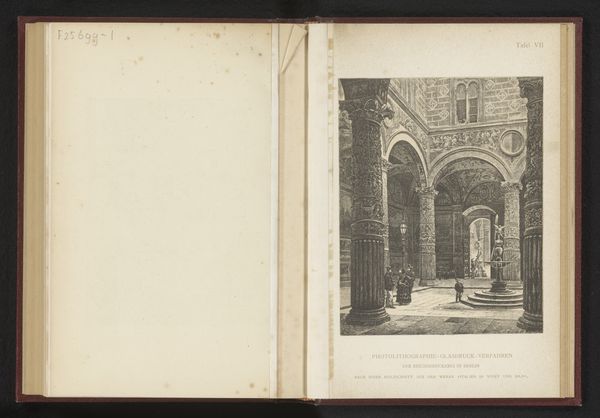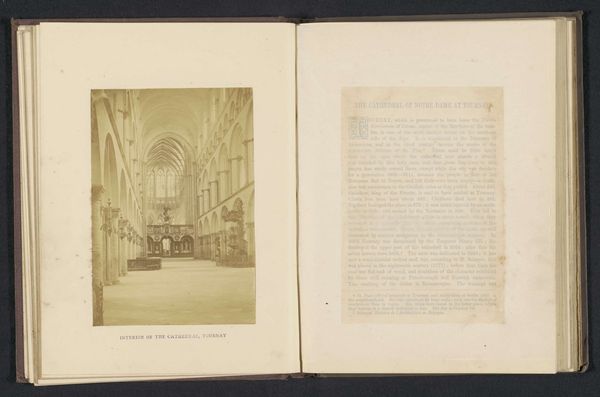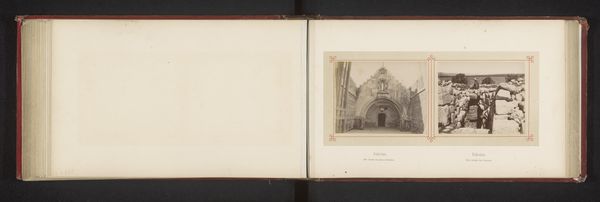
Dimensions: height 218 mm, width 171 mm
Copyright: Rijks Museum: Open Domain
Editor: Here we have an etching from before 1893, titled "Interieur van de Notre-Dame van Amiens". It depicts the inside of a cathedral. The linear perspective gives it such a sense of depth. How do you interpret this work? Curator: It’s more than just a landscape. This is gothic architecture. When you consider that cathedrals served not only as places of worship, but as the heart of civic life, even commerce, what social and political dynamics do you think the artist might be trying to capture, or perhaps critique, through this detailed interior? The soaring arches, meant to lift your gaze towards heaven, also underscore the Church’s power. Editor: I never thought of the architecture as making a political statement! But the size and the detail… I see what you mean. What about the fact it’s rendered as a print rather than, say, a painting? Does that influence your understanding? Curator: Absolutely. The print medium makes the image accessible. Consider how prints historically circulated ideas, often radical ones. The choice to reproduce this cathedral, using ink on paper, raises questions of access, knowledge, and who gets to possess an image of power. It becomes a commentary on class and privilege. Do you agree? Editor: Yes, I think that’s an interesting point. Thank you for bringing a fresh perspective on how architecture can be a vehicle for historical, and even social, commentary. I definitely learned a lot! Curator: The pleasure was all mine.
Comments
No comments
Be the first to comment and join the conversation on the ultimate creative platform.
